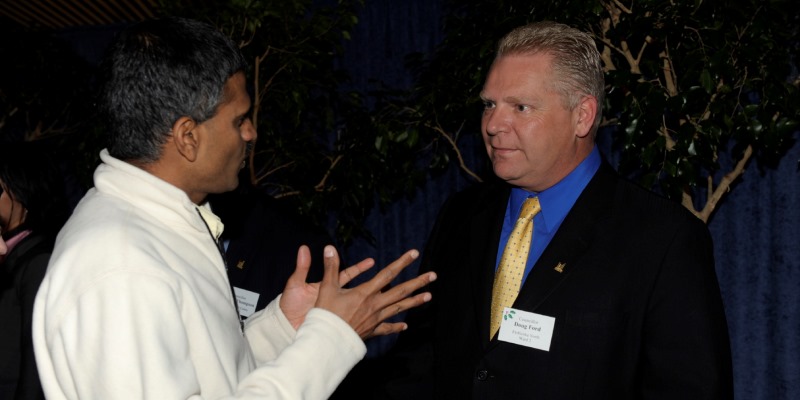Ford's first budget must fulfill campaign promises

Clearly, Ontario’s finances are in bad shape. With a government debt load of more than $23,000 per resident and a 10-figure annual budget deficit, the Ford government has inherited serious challenges.
There’s good news though—Ontario’s problems are not insurmountable. Given the size of Ontario’s economy and projected revenue growth, the data suggest that the Ford government can make big progress in cleaning up Ontario’s fiscal mess by exercising the spending discipline that for many years has been absent from Queen’s Park.
Let’s take a quick look at the numbers. This year, Ontario forecasts a $12.5 billion budget deficit (excluding a $1 billion reserve cushion to cope with unexpected expenses). Even for a provincial government, $12.5 billion is big money. Still, it’s important to remember that Ontario’s a big place with a big economy and, even without policy changes, provincial revenue grows significantly each year (barring a recession or nasty economic slowdown). For example, last year’s budget forecasted Ontario’s nominal revenue will climb by $11.3 billion over the next two years.
If nominal spending stays flat, that’s enough to wipe out more than 90 per cent of the deficit. If the government implements annual nominal spending reductions of one per cent annually, that would be sufficient to eliminate the deficit in just two years—if current revenue forecasts come to pass.
Of course, there’s nothing easy about holding nominal spending flat, let alone trimming nominal spending by even one per cent. There’s upward pressure on the provincial budget from inflation, population growth and aging. That said, the restraint required by the Ford government to get back to balance should be viewed in the context of recent history and the government’s own campaign rhetoric about the cause of Ontario’s fiscal challenges.
First, consider that provincial government program spending has increased significantly over the past two years. Specifically, program spending this year is forecasted to be $17.7 billion higher than two years ago. In this context, a freeze or even small nominal two-year reduction should be viewed as a rollback of recent rapid deficit-financed spending growth.
Second, note that a nominal spending freeze represents a decrease in the wonky-but-telling-measure of inflation-adjusted per-person spending of approximately three per cent a year. Add in the one per cent annual nominal reduction over two years to balance the budget, and you get a four per cent annual reduction in inflation-adjusted per-person spending.
And remember, on the campaign trail, then-candidate Ford said the Wynne government was rife with wasteful spending, and consequently, spending reductions of some four per cent annually could be found with relative ease through “efficiencies” without harming public services.
Fortunately, the 2018 annual report from Ontario’s auditor general documents a litany of cronyism, costly consultants and misbegotten IT overhauls with mindboggling expenses. The government has a great place to start.
However, if the Ford government fails to follow through, and instead increases nominal spending, it will vindicate critics who said during the campaign that the promised efficiencies would prove illusory.
Premier Ford promised to streamline government, find real efficiencies, reduce spending and move quickly to balance the budget. Critics called all that baloney. Thursday we’ll know a lot more about who was right and who was wrong.
Author:
Subscribe to the Fraser Institute
Get the latest news from the Fraser Institute on the latest research studies, news and events.

